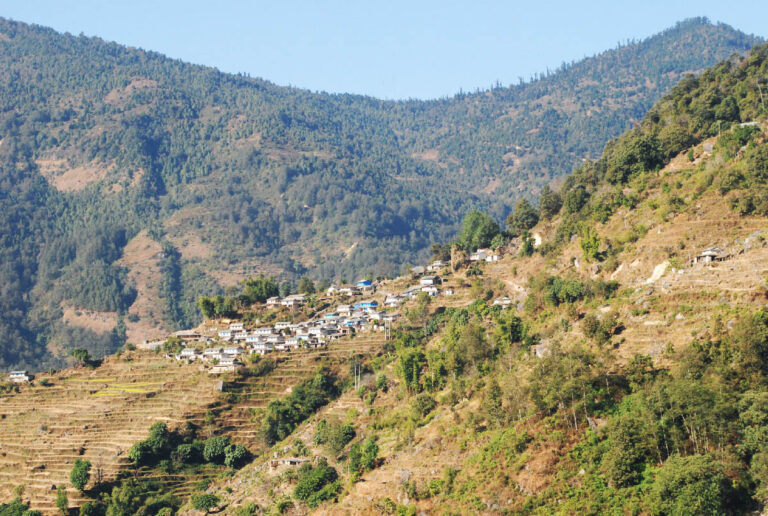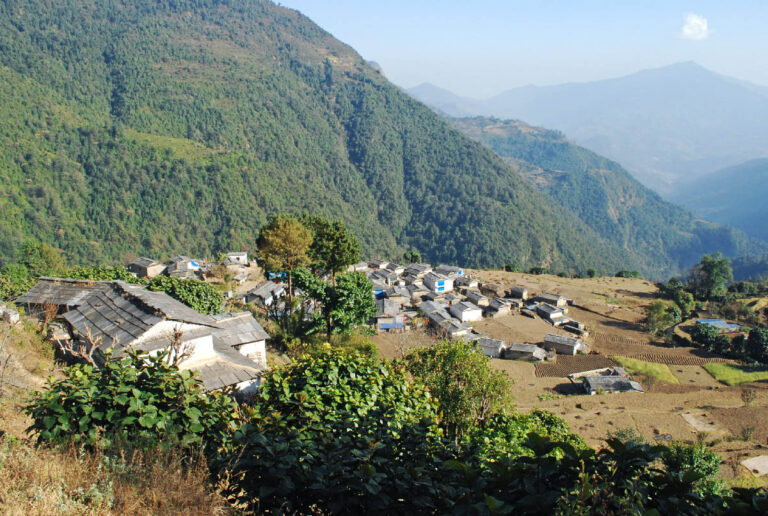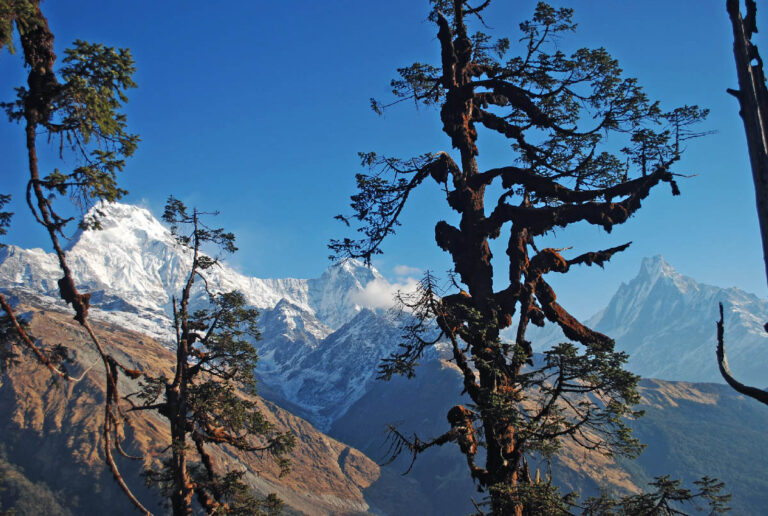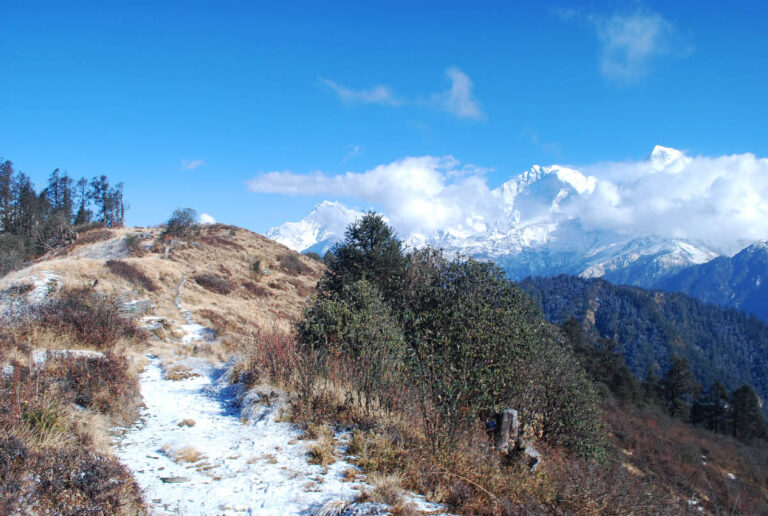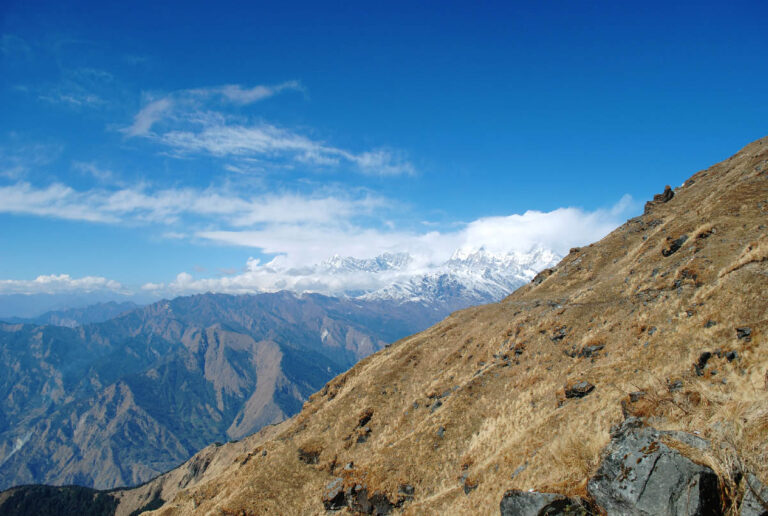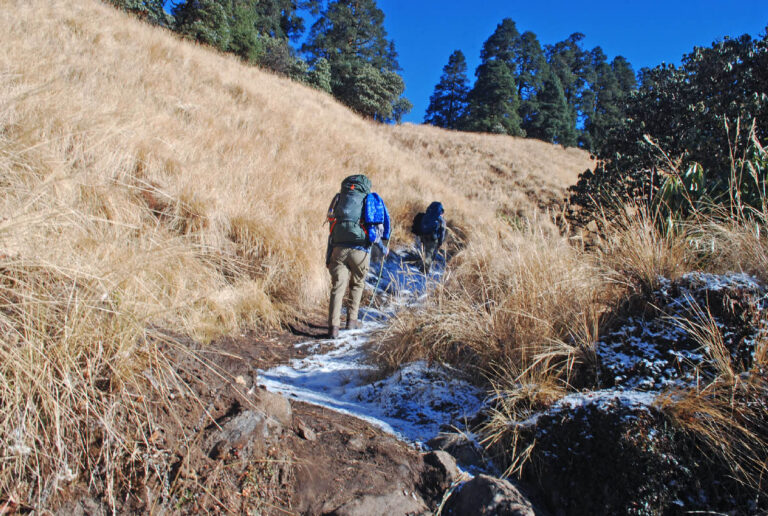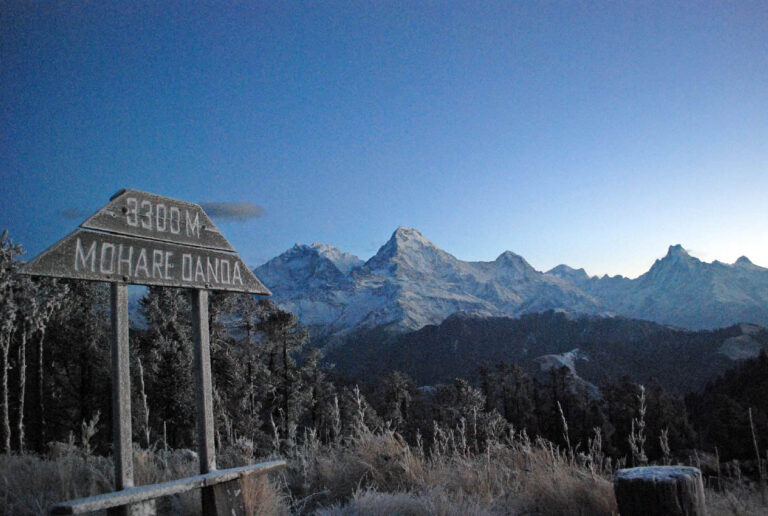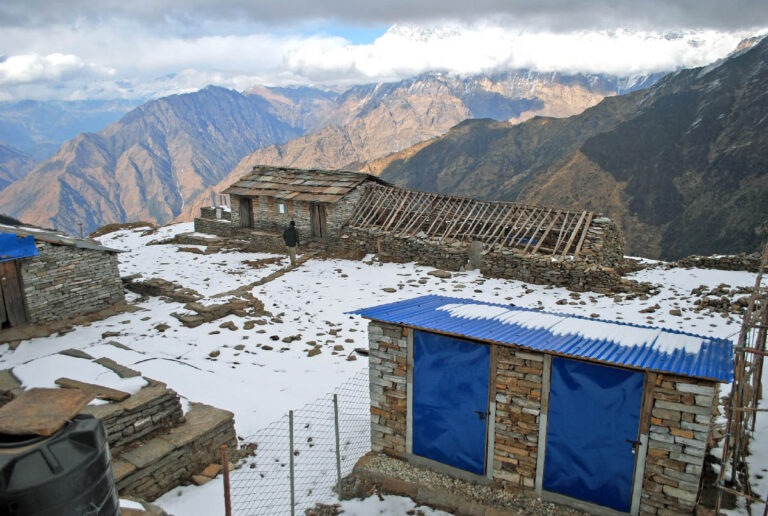Day 01 – we will pick you up from the Kathmandu airport and transfer to hotel. Your hotel will be center of the Thamel; which is one of the tourist hubs of the Kathmandu city.
Day 02 – City sightseeing to the historical places around the Kathmandu valley, like the Pashupatinath temple, the Baudhanath Stupa, the Patan Durbar Square and Swayambhunath which is also known as the monkey temple due to see thousands of moving monkeys around the temple. After exploration of these places we will return back to guesthouse and your guide will brief about trekking route, trekking gears and related topics.
Day 03 – Drive to Pokhara – Pokhara is 204 kilometers far from Kathmandu valley so we will drive an approximately 7 hours to get Pokhara with the view of the Trisuli River, massif view of Manaslu, Ganesh Himal and Annapurna mountain range.
Day 04 – Drive to Nayapul and trek up to Purnagoun (1410m.a.s.l.) – 4 hours walk – Nayapul is 42 kilometers far from the Pokhara City and the drive might takes an approximately one and half hours to get Nayapul. From Nayapul we will head towards Purnagoun through the verdant paddy fields pass by hundreds of houses, vegetable gardens, resting points and water mills. We will have our lunch in Maidang village and we will walk another one hour to get Purnagaun village where we will spend our joyful night at the basic guesthouse.
Day 05 – Trek to Lespar village (1700m.a.s.l.) – 6 hours walk – At the begins of the morning we will walk through the paddy field to get Ghurunga village then forested trail leads us to the Lespar with marvelous view of landscapes, waterfalls and rocky hills. After 5 hours walk from Purnagaun appear a suspension bridge over the Pati Khola the trail gently ascends for 45 minutes to get Lespar village where we will spend our joyful night at Laxmi guesthouse.
Day 06 – Trek to the Nagi village (2019m.a.s.l.) – 7 hours walk – After breakfast, we will climb up about 2 hours through the dense forest to get Chhupeni Danda; which is a beautiful hill top to see charm landscape, green forest, settlements and rocky hills. From here we will walk on the flat trail until Salija village pass by gigantic grassy land, small streams, Buddhist Chhortens and dense forest. En route we will have splendid view of Dhaulagiri and its neighbor peaks. Nagi is a beautiful Magar village where we will get comfortable bedrooms, delicious meals and as well as free WI-FI service.
Day 07 – Trek to Moharedanda (3299m.a.s.l) – 7 hours walk – Trek of the day would be one of the longest and hardest walks of the whole trip because there are not any teahouses between Nagi and Moharedanda. The uphill and forested trail leads towards a pass called Hompal; which is 3098 meters high above the sea level and offers to see beautiful landscapes and mountain vistas. From the Hompal pass, we will walk via rugged moraine and picturesque places to get Moharedanda; which is one of the best viewpoints entire the Annapurna region.
Day 08 – Trek to Swata Village (2210m.a.s.l.) – 5 hours walk – The morning offers to see beautiful sunrise and panoramic views of Baraha Shikhar, Hiuchuli, Mardi Himal, Fishtail, Garbuja peak, South Annapurna, Nilgiri and including three top ten mountains of the world called Annapurna first 8091m, Manaslu 8163m and Dhaulagiri 8167 meters high above the sea level. After sight of this incredible view, we will head towards Swata village through the lush forest and pass by two small villages called Fulbari and Phalate. We will have our lunch in Phalate and rest of the trek to Swata might takes an approximately one and half-hours.
Day 09 – Trek to Chistibang (3125m.a.s.l.) – 6 hours walk – Today we have to climb up whole day to get Chistibang, which is also called Dhansara. Most of the time we will walk through the forest so can be seen some of the wild life, many specious of birds and butterflies. Chistibang is surrounding by the forest and available two guesthouses and provides delicious meal and drinks with great hospitality.
Day 10 – Trek to Khopra ridge (3660m.a.s.l.) – 3 hours walk – We will trek only three hours trek to get Khopra ridge; which is our last destination and highest elevation of the trek after the sight trip to Khayar Lake. The trail leads us through the forest and pastureland with stunning view of Annapurna south and charms landscape. We can reach to Khopra ridge in Lunchtime so will be enough time to relax and to see stunning view of high Himalayas and deep gorge of Kali Gandaki River.
Day 11 – Sight trip to Khayar Lake (4570m.a.s.l) – 8 to 9 hours walk – The Khayar Lake is located just bottom of the south Annapurna Mountain at an altitude of 4570 meters high from the sea level and takes about 5 hours to reach there. Sight trip to Khayar Lake offers to see closer view of Annapurna south, Hiuchuli, Baraha Shikhar, Dhaulagiri, Kaligandaki River valley, green forest, enormous pastureland and as well as Khayar Lake which is a holy Lake for the Hindu people and visiting during the Janai purnima of every year.
Day 12 – Trek to Dobato (3435m.a.s.l.) – 6 hours walk – There are two trails to get Dobato from Khopra ridge, called upper and lower trail. The upper trail is more picturesque, pleasant and shorter than lower trail but might be closed in wintertime or if snowstorm while traveling around there. If the upper trail is closed then trekkers have to walk down to the Chistibang and trek continuously through the dense forest of Pine and Rhododendron. The trail junction of the lower and upper trail is can be seen after 40 minutes walk from the Khopra ridge.
Day 13 – Trek to Tadapani (2590m.a.s.l.) – 6 hours walk – Today we will walk down to Tadapani Village with the view of Machapuchare, Hiuchuli, Mardi Himal and south Annapurna. Most of the time we will walk on a downhill trail through the rhododendron forest so possible to see some wildlife, such as monkeys and many species of birds and butterflies. There are a dozen of lodges available in the Tadapani villages with a splendid view on the mountains.
Day 14 – Trek to Ghandruk Village (1940m.a.s.l.) – 5 hours walk – After sight of beautiful sunrise and crystal mountain views from Tadapani village; we will head towards Ghandruk village through the dense forest of Rhododendron. Begins of the trek, we will walk an approximately one hour on the flat trail to get Bhaisikharka then the trail descend to a small stream for 35 minutes. Rest of the trek would be very pleasant due to walk forested trail and beautiful vistas of Fishtail, Hiuchuli, Annapurna south and Mardi Himal mountain ranges.
Day 15 – Trek to Nayapul and drive back to Pokhara. There are many trekking routes from the Ghandruk village to get to Pokhara like: trek to Nayapul and drive back to Pokhara or trek continuously via Landruk, Tolka, Deurali, Pothana, Australian camp and drive back to Pokhara from Kande village. Trek from Ghandruk to Nayapul may take about 5 hours passing by small villages called Kimche, Syauli Bazaar and Birethati; which are settled on the bank of the Modi River. Along the trail, trekkers can see the beautiful terraced field, green forests and the Modi river valleys.
Day 16 – Fly or drive back to Kathmandu – There are two options to get back to Kathmandu from Pokhara. If trekkers have enough time then they can drive either public bus or tourist bus that may takes 6 to 7 hours. If trekkers are in hurry then they can fly out from Pokhara that may takes 25 minutes to get Kathmandu.The flights commands to see panoramic view of Annapurna, Manaslu, Ganesh Himal, Langtang Himal and Dhaulagiri ranges from the windows of the plane.
